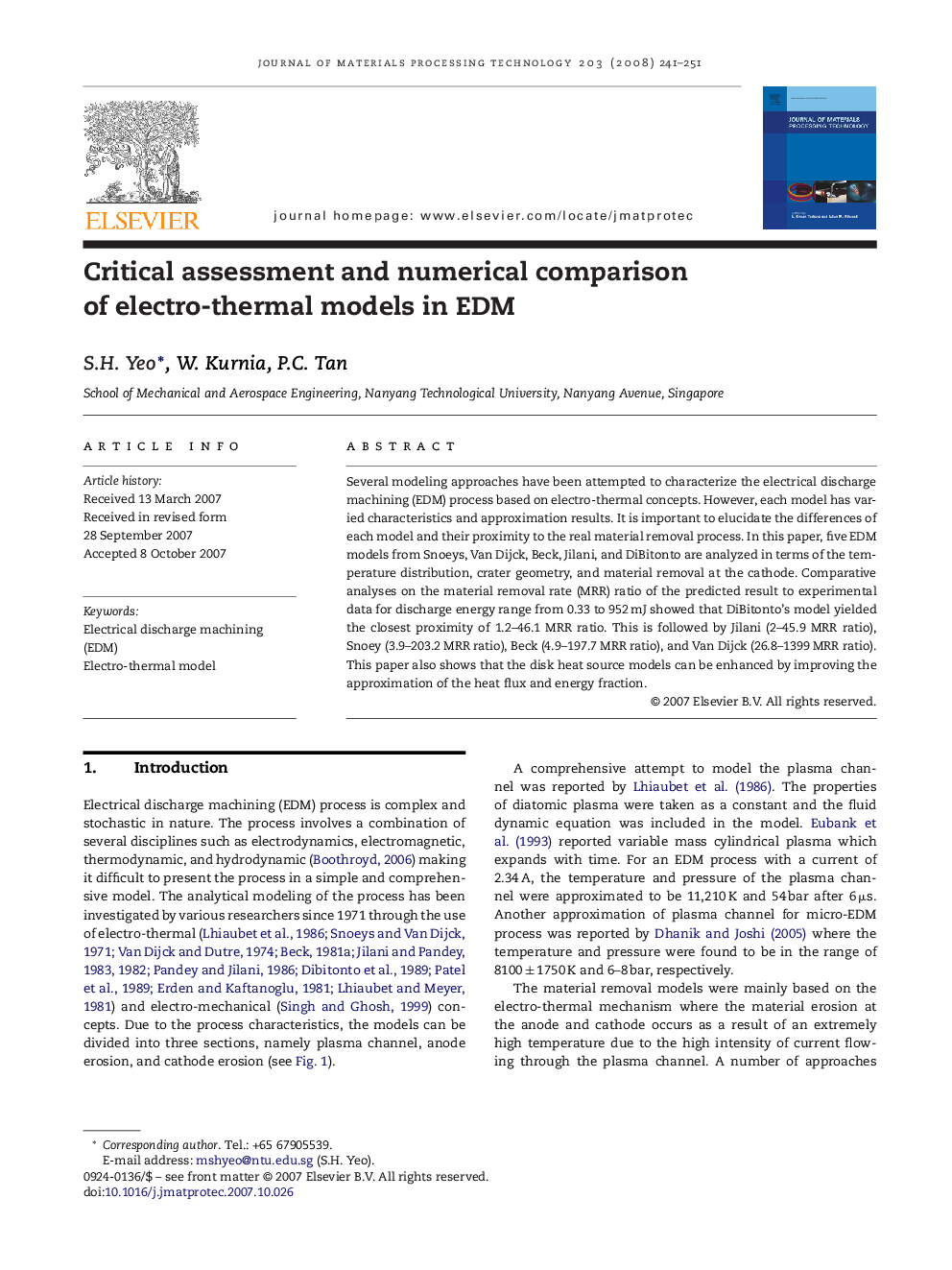| Article ID | Journal | Published Year | Pages | File Type |
|---|---|---|---|---|
| 795342 | Journal of Materials Processing Technology | 2008 | 11 Pages |
Several modeling approaches have been attempted to characterize the electrical discharge machining (EDM) process based on electro-thermal concepts. However, each model has varied characteristics and approximation results. It is important to elucidate the differences of each model and their proximity to the real material removal process. In this paper, five EDM models from Snoeys, Van Dijck, Beck, Jilani, and DiBitonto are analyzed in terms of the temperature distribution, crater geometry, and material removal at the cathode. Comparative analyses on the material removal rate (MRR) ratio of the predicted result to experimental data for discharge energy range from 0.33 to 952 mJ showed that DiBitonto's model yielded the closest proximity of 1.2–46.1 MRR ratio. This is followed by Jilani (2–45.9 MRR ratio), Snoey (3.9–203.2 MRR ratio), Beck (4.9–197.7 MRR ratio), and Van Dijck (26.8–1399 MRR ratio). This paper also shows that the disk heat source models can be enhanced by improving the approximation of the heat flux and energy fraction.
